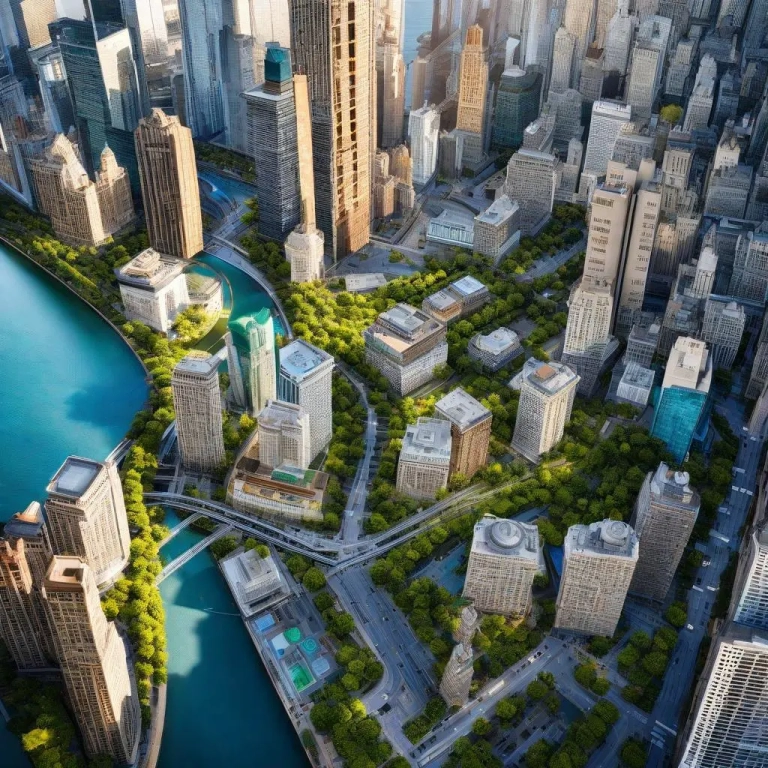1. Introduction
In the intricate tapestry of urban life, the role of urban planning stands out as a crucial factor in creating cities that resonate with the needs of their residents. This article delves into the multifaceted aspects of urban planning, emphasizing its pivotal role in designing cities for people.
2. Understanding Urban Planning
Urban planning goes beyond the mere layout of streets and buildings. It involves a holistic approach to shaping the physical and social framework of a city, considering factors like transportation, green spaces, and community facilities.
3. Balancing Infrastructure and Nature
Exploring the delicate equilibrium between concrete jungles and green havens, urban planning seeks to integrate infrastructure with nature. Parks, gardens, and sustainable architecture contribute to a city’s livability index.
4. Community-Centric Spaces
Fostering a sense of community is at the heart of effective urban planning. Designing public spaces that encourage social interaction, such as community centers and gathering spots, strengthens the social fabric of a city.
5. Accessibility and Mobility
The ease of movement within a city is a barometer of its livability. Urban planning strives to create efficient transportation systems, pedestrian-friendly pathways, and accessible public spaces, ensuring mobility for all.
6. Inclusive Housing Solutions
Urban planning addresses the diverse housing needs of a population. From affordable housing to mixed-use developments, the focus is on creating neighborhoods that cater to the varied socio-economic backgrounds of residents.
7. Cultural Integration in Urban Design
Cities are melting pots of diverse cultures. Urban planning, when done thoughtfully, integrates cultural elements into the cityscape, celebrating diversity and fostering a sense of belonging for all.
8. Technology and Smart Urban Planning
The digital age has ushered in a new era of smart urban planning. Utilizing technology for efficient city management, from smart grids to data-driven decision-making, enhances the overall quality of urban living.
9. Economic Sustainability
Thriving cities are economically sustainable. Urban planning plays a pivotal role in creating an environment conducive to business growth, job opportunities, and a resilient economic landscape.
10. The Importance of Public Health in Urban Design
A well-designed city prioritizes public health. Incorporating health-centric features like bike lanes, recreational spaces, and pollution control measures contributes to a healthier and happier urban populace.
11. Resilience in the Face of Challenges
Urban planning anticipates and addresses challenges such as climate change and population growth. Resilient cities are those that adapt and thrive despite external pressures, showcasing the foresight embedded in effective planning.
12. The Green Revolution in Urban Spaces
An eco-friendly approach is gaining prominence in urban planning. The integration of sustainable practices, renewable energy sources, and green building designs reflects a commitment to environmental stewardship.
13. The Role of Citizen Participation
Successful urban planning involves the active participation of the community. Engaging citizens in decision-making processes ensures that the city reflects the aspirations and needs of its residents.
14. Educational Hubs and Lifelong Learning
Cities are not just habitats; they are centers of knowledge and education. Urban planning prioritizes the establishment of educational hubs, promoting lifelong learning and intellectual growth.
15. Art and Aesthetics in Urban Spaces
Beauty is a fundamental aspect of a livable city. Urban planning incorporates art and aesthetics, transforming public spaces into vibrant canvases that inspire and uplift.
16. Emergency Preparedness and Safety
Safety is paramount in urban design. From effective emergency response systems to well-lit streets, urban planning aims to create cities where residents feel secure and protected.
17. Revitalizing Urban Core Areas
Breathing new life into the heart of a city is a key focus of urban planning. Revitalizing urban core areas preserves cultural heritage while ensuring a dynamic and thriving urban center.
18. The Impact of Urban Planning on Mental Well-being
The built environment directly influences mental health. Urban planning that prioritizes green spaces, recreational areas, and stress-free urban design contributes to the overall well-being of residents.
19. Adapting to Future Trends
Urban planning is a dynamic field that evolves with societal trends. From the rise of remote work to changing transportation preferences, adapting to future trends is essential for creating resilient and future-proof cities.
20. Challenges in Urban Planning
Acknowledging the challenges is vital for effective urban planning. From bureaucratic hurdles to funding issues, understanding and overcoming obstacles is integral to creating livable cities.
21. Case Studies in Successful Urban Planning
Examining real-world examples of successful urban planning provides valuable insights. Case studies showcase the positive impact of thoughtful design on the livability and vibrancy of cities.
22. Global Perspectives on Urban Planning
Urban planning is a global endeavor. Exploring different approaches from around the world offers a diverse perspective on creating livable cities that cater to the unique needs of their populations.
23. Measuring the Success of Urban Planning
Defining metrics for success is essential in evaluating urban planning initiatives. From resident satisfaction surveys to environmental impact assessments, measuring success ensures continuous improvement.
24. The Future of Urban Planning
Looking ahead, the future of urban planning holds exciting possibilities. From sustainable innovations to community-driven initiatives, the trajectory of urban planning promises a brighter and more livable urban landscape.
25. Conclusion
In conclusion, the importance of urban planning in creating livable cities cannot be overstated. It is a dynamic and evolving discipline that shapes the present and future of our urban spaces. By prioritizing people-centric design, inclusivity, and sustainability, urban planning becomes the cornerstone of vibrant and thriving cities.
FAQs
How Does Urban Planning Impact Daily Life? Urban planning shapes the physical and social aspects of cities, influencing how people live, work, and interact. From accessible public spaces to efficient transportation, its impact is felt in daily routines.
Is Urban Planning Only About Infrastructure? No, urban planning goes beyond infrastructure. While it includes layout and design, it also considers social, economic, and environmental factors, aiming for a holistic and balanced approach to city development.
Can Urban Planning Solve Traffic Congestion? Yes, effective urban planning can alleviate traffic congestion. By implementing smart transportation solutions, such as public transit systems and intelligent traffic management, cities can enhance mobility.
How Does Urban Planning Address Affordable Housing? Urban planning tackles affordable housing by designing mixed-use developments, zoning regulations, and incentives for affordable housing projects. The goal is to provide diverse housing options for all income levels.
What Role Does Technology Play in Urban Planning? Technology plays a significant role in modern urban planning. From smart city solutions to data analytics for decision-making, technology enhances efficiency, sustainability, and overall quality of life in cities.
Why Should Citizens Be Involved in Urban Planning? Citizen involvement ensures that urban planning aligns with the needs and aspirations of the community. It promotes transparency, inclusivity, and a sense of ownership among residents.







